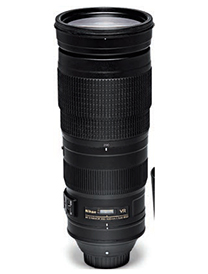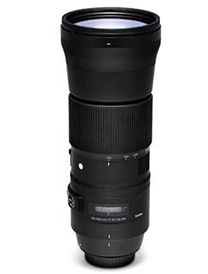

Soft Backgrounds
To create soft out of focus backgrounds, one needs a ‘fast’ lens with as wide an aperture as possible. I cannot afford such lenses. Is there any other way out?
A. B. Sawant, via email
With any lens, the closer you go to the subject, the softer will be the quality of the out of focus background. In other words, a framefilling shot will have a better ‘bokeh’ than one that fills only half the frame.
Besides the aperture, the focal length too plays an important role in creating a smooth bokeh. In general, the longer the focal length, softer the background. If you can combine the characteristics – use a long focal length lens, go as close as possible to the subject and use the widest aperture available, you could get a very soft background.
Do keep in mind though, different focal length lenses will provide a different ‘look’ to the image. You could, for example, take a portrait using a 500mm lens at its minimum focussing distance and at its widest aperture. You could also use a 85mm lens, wide open, to take the same portrait. In both the cases, the subject will look different; the longer lens will give an impression of compressing the face whereas the 85mm lens will make the subject look ‘proper’.



Manual Exposure Mode
I don’t understand the logic behind having Manual exposure mode. I have photographed the same subject using Aperture Priority (at f/11) as well as Shutter Priority (using the same shutter speed that I got when using Aperture Priority) and found both exposures to be perfect. Manual exposure on the other hand, is cumbersome to set up as you have to fiddle around getting the correct setting. So why is Manual exposure setting provided?
(Name withheld on request, telephonic inquiry
I agree with you that setting exposure via Aperture Priority and Shutter Priority is easier and quicker. But Manual exposure plays a very important role. Please try this experiment.
1) On a sunny day, place a subject in front of medium tone background. Ensure that the lighting is frontal. From a reasonably far distance, take the shot using Aperture Priority mode. Do not fill the frame with your subject; in other words, leave ample space around the subject.
2) Repeat the shot, but this time make sure that the background is very light in tone (like open, toneless sky). The aperture you use here should be identical to what you used earlier. Be certain that the light has not changed either.
3) Once again repeat the shot, but this time make sure that the background is very dark (like deep shade). The aperture you use here should be identical to what you used earlier. Be certain that the light has not changed either.
4) Examine the three shots on your computer. What do you find? The first shot (with medium tone background) is likely to be perfect in terms of exposure; in other words, the subject would have been perfectly exposed.
5) In the second shot, where the background was light in tone, the subject will be underexposed while in the third shot, where the background was dark, the subject will be overexposed.
Remember, the lighting has not changed for all the three shots; the subject has not changed either. So then why are the three exposures different? The reason is that, with reflective light metering (the type we have in our cameras), exposures can change depending on the tonality of the background. But when you meter in Manual Exposure mode, the exposure does not change due to the reflectivity of the background. So once you find the correct exposure in Manual exposure mode, you do not have to worry about any change in exposure due to the tonality of the background, unless the lighting changes. If the lighting changes, you have to recheck the exposure. |SP

